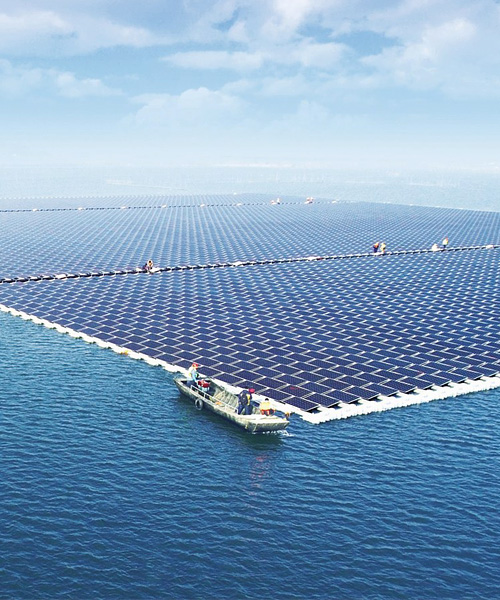Floating Solar



Floating solar solutions
FLOATING SOLAR IS NOWADAYS THE THIRD PILLAR OF THE GLOBAL SOLAR PV MARKET
Floating solar systems are an alternative to conventional PV plants that require huge areas of land to generate commercially viable green electricity and cannot be as close to the areas where the demand for electricity is higher.
It is a new, reliable and cost-effective solution to turn water bodies into solar power plants for the production of clean energy, while conserving land, without competing with agricultural activities. The floating systems are easier and faster to install and remove than other similar PV installations. They withstand tougher conditions and are more efficient than other solar plants due to the water’s cooling effect mostly, which helps to reduce thermal losses.
Floating solar has a high potential in the solar energy market
- 35 countries have estimated a cumulative capacity of aprox. 2.6 GW
- FPV might grow more than 20% in the coming five years
- FPV is predicted to generate $2,301.8 Million by 2026

Universal Kraft is one of the pioneers in the technology and has already gained knowledge in this area with over 230 MW of designed projects.
Floating solar installations face some engineering and maintenance challenges, however it offers significant opportunities for the global and local expansion of the global solar energy capacity installed.
How it works?
Mounting System
Designed to keep the equipment stable due to the impact of weather conditions. The system is used to connect PV module panels and other parts of the solar floating system.
PV System
PV Generation equipment is used, mostly crystalline solar photovoltaic modules.
Underwater Cable
The underwater cabling is used to transfer generated power from the water bodies to the substation.
Mooring System
A permanent structure used to halt the movement of the floating solar installation in the water. It adjusts the water level fluctuations while maintaining its position in a southward direction.

